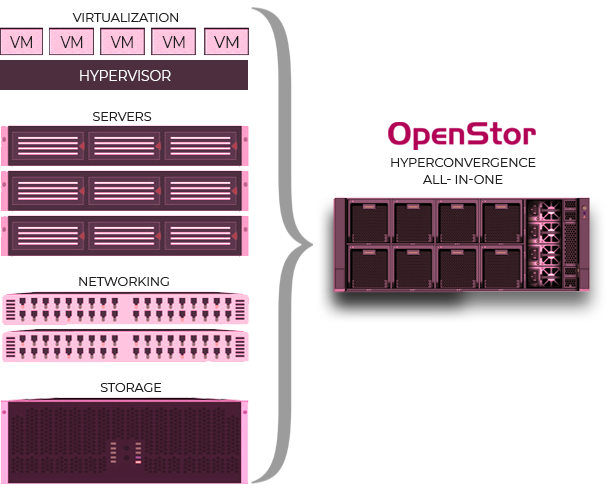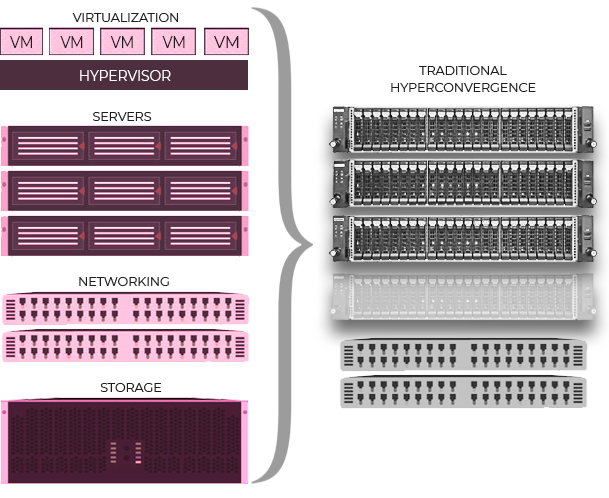As IT infrastructures evolve, organizations are increasingly faced with the need to implement highly efficient and scalable storage and data management solutions throughhyperconvergence.
In this context, two main approaches emerge as popular solutions:all-in-one hyper convergence and distributed hyperconvergence. Both of these approaches offer distinct advantages, but it is important to understand the differences between them to determine which is best suited to an organization’s specific needs.
What is all-in-one hyperconvergence?
All-in-One hyperconvergence is an architecture that integrates all the key components of an IT infrastructure (servers, storage, networking, and virtualization) into a single system or appliance.
This means that all hardware and software components required for operation are included and pre-configured within a single solution.
More information is available in this section.

Benefits of All-in-One Hyperconvergence
Ease of implementation: Being an integrated system, all-in-one hyperconvergence is relatively easy to implement compared to traditional solutions that require the integration of separate components.
Reliability: In the event of failure of one of the nodes, the workload can be easily distributed to other nodes, providing greater overall infrastructure resilience.
Simplified management: Infrastructure management becomes easier as all resources are managed through a single interface.
Vertical scalability: You can increase resources within the individual device by adding modules or add-ons.
The possibility of the described expansions, which allow for increases in computing capacity and storage capacity, proves to be very convenient, especially when infrastructure needs to be scaled up as a result of business growth.
What is distributed hyperconvergence?
Distributed hyperconvergence, on the other hand, is an architecture in which storage and computational components are distributed across multiple nodes within an infrastructure.
In this case, each node contributes to the overall infrastructure resources, and the distributed management software is responsible for coordinating the use of these resources.

Benefits of distributed hyperconvergence
Horizontal elasticity: Scaling capability occurs through the addition of new nodes, enabling more flexible growth than all-in-one hyperconvergence.
Reliability: In the event of a failure of one of the nodes, the workload can be easily distributed to other nodes, providing greater overall infrastructure resilience.
Performance: With distributed architecture, workload can be distributed more efficiently across multiple nodes, improving overall system performance.
Conclusions
The choice between All-in-One hyperconvergence and distributed hyperconvergence depends on the specific needs of the organization. If you are looking for a solution that is simple to implement and manage, All-in-One hyperconvergence may be the best choice.
However, for organizations that need greater flexibility, scalability and performance, distributed hyperconvergence may be more suitable .
It is important to carefully evaluate the requirements of the IT infrastructure and consider the trade-offs between the two approaches before making a decision.
